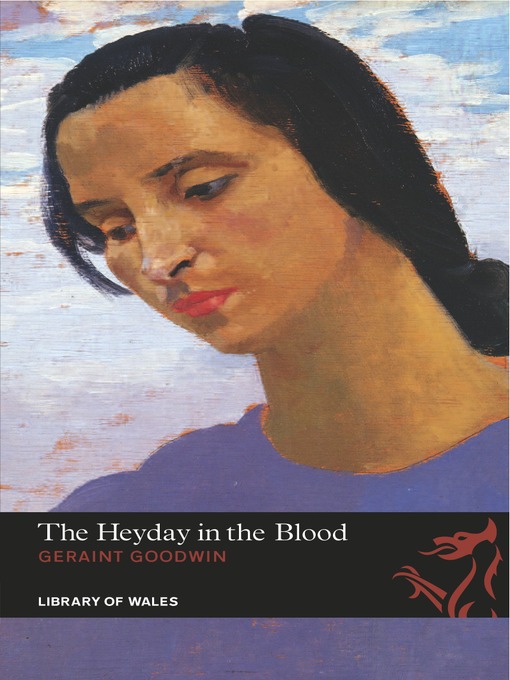In fictional terms mid-Wales is often unmapped territory, its small population, scattered across a substantial land mass – and much of that sheep country – is seldom the subject nor even the backdrop to novels or short stories.There are glorious exceptions, of course, such as Niall Griffiths’s Grits, Stump and Sheepshagger and there is certainly Geraint Goodwin, too.
Goodwin is the one English language writer who staked a claim to Montgomeryshire towns such as Newtown, on its ‘sullen bend of the river’ Severn, and on their green hinterlands.
When I lived there it was to Goodwin I turned for a bright and vivid take on life thereabouts, even though he was writing about mid-Walian life in the 1920s and 1930s.Yet there is a great deal in this 1936 novel which seems to presage and predict our own times.Take this exchange, for example, from pretty much the mid-point of the novel, when rumours of a new road running through the village of Tanygraig turn out to be well founded:
‘Best place in the world – to get out off,’ broke in Wili the Hut ponderously. ‘Yr hen wlad! Forty years time there is no Wales. House empty; call next door. You wait: you see.’
‘Now, now,’ said Moses anxiously.’Wales wass Wales before ever England wass England.’
‘Wrong man,’ shouted Dici with heat.’Wales wass Wales when Wales wass England.’
‘Where do you think Tanygraig will be in a bit?’ went on Wili, red as a turkey cock.’Where do you think?’
‘Bottom of the sea.’Dici spat into the fire…
Much of this spirited novel revolves around life in the Red Lion, focusing on Beti, the daughter of the (public) house and her landlord father, Twmi and the cast of roisterers and pub philosophers, visiting English ‘jentlemens’ who come annually for the shooting and Welsh ‘shonihois from the South’ who pass through on their search for work.

by Geraint Goodwin
Beti has just been offered domestic work in London and is on the horns of a dilemma, not to mention the fact that there are two men vying for her attention, the dashing poacher and general heartbreaker Llew and the tubercular poet Evan.Beti doesn’t want to leave, she loves life in the country and sees urban life as tawdry and dirty, and her visits to the local market are this perfunctory, with Beti wanting to get back home as quickly as possible.And her home life in inflected with the rhythms and spectacles of nature, such as the kingfisher which bursts brightly through the opening pages:
She had seen it many times from her bedroom window, flying out from the waterfall to the brook. She knew it was the kingfisher by its low drumming flight, straight as a rod, and then the final curl.But there was only one way to see a kingfisher and that was from behind – to follow its flight through. The flash of the passing bird was not enough.It was like a shooting star – the colours seemed to explode and before she had lifted her eyes it was all over.But to follow the bird through, to watch the light gather on the drumming wings and the colours glisten like so many facets, finally to blend and liquefy and so enshroud it as a nimbus… that was to see the kingfisher.
And so I re-read The Heyday in the Blood for the third time, pondering as one often does, how much one forgets between one reading and the next.I’d forgotten the cod Welsh language and sometimes indecipherable dialogue, indecipherable, that is until you come to realize that you need to transpose letters to get the full sense, put a ‘b’ at the beginning of ‘pugger’ for instance. There are lots of mutiple ‘rrrr’ sounds trilling away like budgerigars in many conversations, creating a constant rustic burr so that the characters sound like Welsh Wurzels, even before we add words such as ‘wass’ and ‘haf’ as in ‘haf a peep.’ But the words Goodwin puts in his character’s mouths aren’t there for parodic purpose, as in, say Caradoc Evans, but rather he tries to summon up their clumsiness and innocence with a tenderness, with a real feeling of warmth.
As indeed he does with a whole way of life, conjuring up a world of fox hunting, illegal drinking, nasty gamekeepers, bare knuckle fighting, mill-working, fairground liaisons, hunting lurchers, local eisteddfods, unruffable rectors and always, always the subtle transformations of seasons and elements.This novel teems and tumbles with life, a simple life about to be transformed, or maybe stolen by the march of technology and the coming of traffic, and all that it portends.It takes you, the reader, along with it, as if the words have turned into a mill-race, purposeful and true, moving liquidly on as if time itself wants to try out a gallop, to change its pace to keep up with the age.










